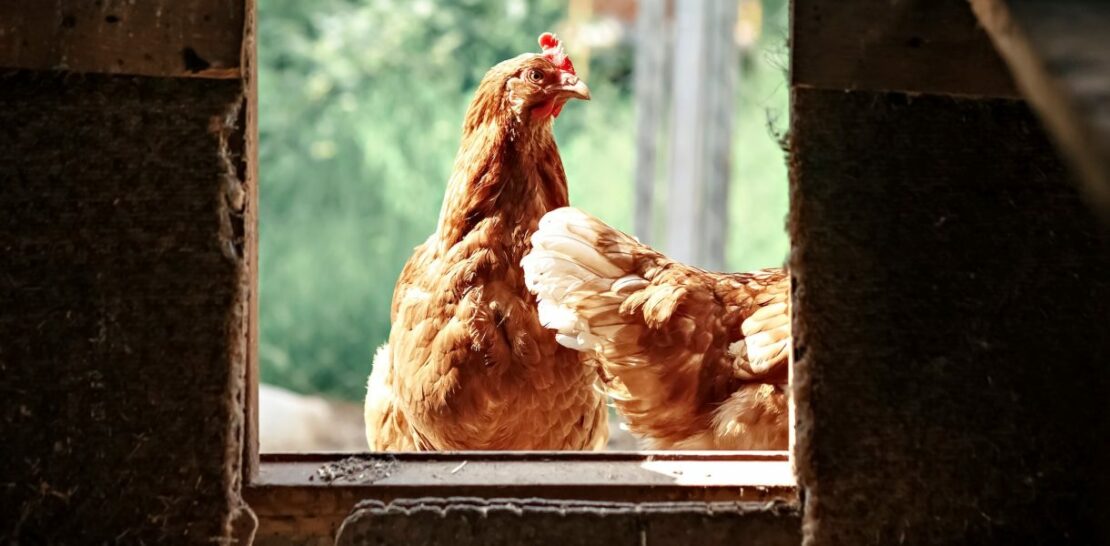As a specialist of the English language with a passion for henhouse management, I am excited to share my knowledge on how to create a fresh, comfortable, and healthy environment for your hens to thrive in.
A well-maintained henhouse is not only beneficial for the well-being of your hens but also contributes to higher egg production, making it a worthwhile endeavor for backyard poultry enthusiasts and professionals alike.
In this comprehensive article, I will walk you through five essential tips to transform your henhouse into a haven of freshness and well-being for your hens.
By the end of this article, you will have the necessary knowledge to create a henhouse that your hens will thrive in and that you can be proud of.
Tip 1: Ensuring Proper Ventilation and Air Circulation
One of the most crucial aspects of maintaining a fresh henhouse environment is ensuring adequate ventilation and air circulation.
Why is proper ventilation important? Ventilation plays a vital role in maintaining the overall health of your hens, as it helps regulate temperature, control humidity, and remove harmful gases such as ammonia and carbon dioxide. Poor ventilation can lead to respiratory diseases and a decrease in egg production, so it’s essential to pay close attention to this aspect of your henhouse design and maintenance.
Here are some key points to consider when ensuring proper ventilation in your henhouse:
- Location of vents: Vents should be placed high in the henhouse, as warm air and harmful gases rise. This placement allows for the efficient exchange of air, keeping the air fresh and healthy for your hens.
- Size and number of vents: The size and number of vents required will depend on the size of your henhouse and the number of hens it houses. As a general rule, you should aim for a minimum of 1 square foot of vent space per 10 square feet of floor space.
- Protection from drafts: While ventilation is essential, it’s also crucial to protect your hens from drafts, particularly during colder months. Ensure vents have adjustable covers or can be closed off during extreme weather conditions to keep your hens warm and comfortable.
Tip 2: Implementing a Consistent and Thorough Cleaning Routine
A clean henhouse is a fresh henhouse, and establishing a consistent cleaning routine is vital for the well-being of your hens.
Here are some essential elements to include in your henhouse cleaning routine:
- Daily tasks: Perform a quick daily inspection of the henhouse to remove any broken eggs, spilled food, or water. This will help prevent the growth of bacteria and keep the environment clean and fresh.
- Weekly tasks: Each week, remove soiled bedding, droppings, and any debris from the henhouse floor and nesting areas. Replace with fresh, clean bedding and ensure the nesting boxes are clean and dry.
- Monthly tasks: Once a month, conduct a more thorough cleaning of the henhouse, including scrubbing and disinfecting feeders, waterers, and any other surfaces that may harbor bacteria or parasites.
- Biannual tasks: Twice a year, empty and clean the entire henhouse, including removing all bedding and nest box materials. Disinfect and sanitize the entire space before replacing with fresh bedding and materials.
Tip 3: Selecting and Managing Bedding Material
The type of bedding material you choose for your henhouse can significantly impact the overall freshness and cleanliness of the space.
There are several options for bedding materials, each with its advantages and disadvantages. Some of the most popular choices include:
- Pine shavings: Pine shavings are a popular choice due to their absorbency, affordability, and ability to control odors. They provide a comfortable surface for hens to walk and lay on, and their natural insect-repellent properties can help keep pests at bay.
- Straw or hay: Straw and hay are affordable and readily available options for bedding materials. They provide insulation and can be easily composted after use. However, they may not be as effective at controlling odors as other options, and they can attractpests if not properly managed.
- Recycled paper products: Using recycled paper products, such as shredded newspaper or commercially available paper bedding, is an eco-friendly option that provides a soft and absorbent surface for your hens. However, they may not be as effective at controlling odors and may require more frequent replacement.
- Sand: Sand is a unique option for henhouse bedding, as it provides excellent drainage and is easy to clean. It can also help control odors and deter pests. However, sand can be heavy and may not provide adequate insulation during colder months.
Regardless of the bedding material you choose, it’s essential to manage it properly to maintain a fresh and clean environment. Some key management practices include:
- Regularly removing soiled bedding: As mentioned in the cleaning routine section, removing soiled bedding weekly is crucial for maintaining a clean and fresh environment.
- Adding fresh bedding as needed: In addition to removing soiled bedding, it’s essential to add fresh material as needed to maintain a comfortable and clean surface for your hens.
- Properly storing bedding materials: Ensure that your bedding materials are stored in a dry and secure location to prevent mold growth and contamination by pests.
Tip 4: Maintaining Optimal Temperature and Humidity Levels
Creating a comfortable environment for your hens involves maintaining optimal temperature and humidity levels within the henhouse.
Temperature and humidity can have a significant impact on the overall health and well-being of your hens, as well as their egg production. Here are some guidelines to follow when managing these factors in your henhouse:
- Temperature: The ideal temperature range for adult hens is between 45 and 75 degrees Fahrenheit (7-24 degrees Celsius). While hens can tolerate colder temperatures, it’s essential to provide proper insulation and protection from drafts during colder months. In warmer climates, ensure adequate ventilation and shade to prevent overheating.
- Humidity: Maintaining a humidity level of 40-60% is ideal for adult hens. High humidity can lead to respiratory issues and a higher risk of fungal growth, while low humidity can result in dry, irritated skin and respiratory problems. Ensure proper ventilation and use absorbent bedding materials to help control humidity levels.
Tip 5: Providing Enrichment and Comfort for Your Hens
Creating a haven of freshness and well-being for your hens goes beyond just maintaining a clean and comfortable environment. Providing enrichment and opportunities for your hens to engage in natural behaviors is essential for their overall happiness and well-being.
Here are some ideas for providing enrichment and comfort to your hens:
- Nesting boxes: Provide a minimum of one nesting box for every four hens, ensuring they are clean, comfortable, and filled with fresh nesting material. This will encourage egg-laying and provide your hens with a sense of security.
- Perches and roosting bars: Install perches and roosting bars at varying heights in your henhouse to allow your hens to roost and sleep comfortably off the ground. Ensure there is enough space for all your hens to roost without overcrowding.
- Dust baths: Provide a designated area within or near the henhouse for your hens to engage in dust bathing, a natural behavior that helps maintain clean and healthy feathers. You can create a dust bath by filling a shallow container with a mixture of sand, diatomaceous earth, and wood ash.
- Foraging opportunities: In addition to providing your hens with a balanced diet, consider offering them opportunities to forage for insects and plants. This can be accomplished by allowing your hens access to a fenced outdoor area or providing them with leafy greens, mealworms, or other nutritious treats.
In conclusion, creating a fresh and comfortable henhouse environment involves a combination of proper ventilation and air circulation, a consistent cleaning routine, the selection and management of suitable bedding materials, maintaining optimal temperature and humidity levels, and providing enrichment and comfort for your hens. By following these five expert tips, you will be well on your way to transforming your henhouse into a haven of freshness and well-being for your hens, ensuring their happiness, health, and productivity. Happy henkeeping!




